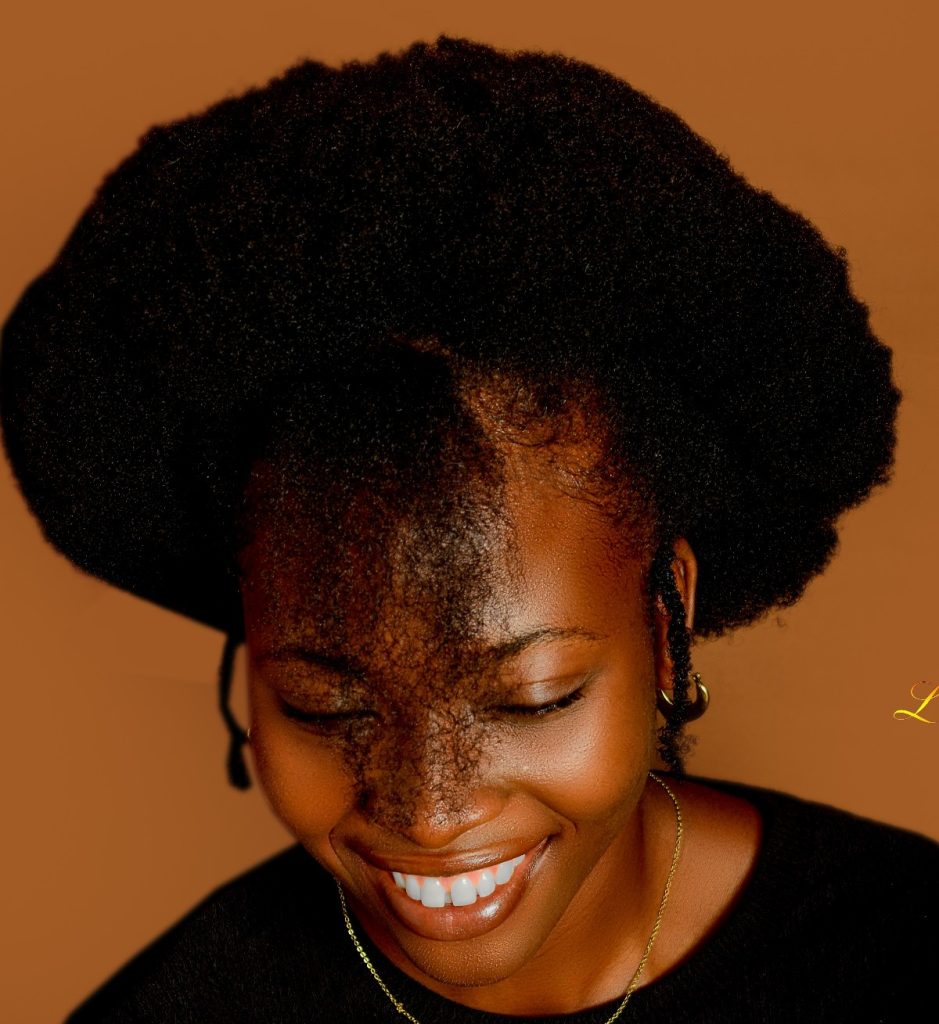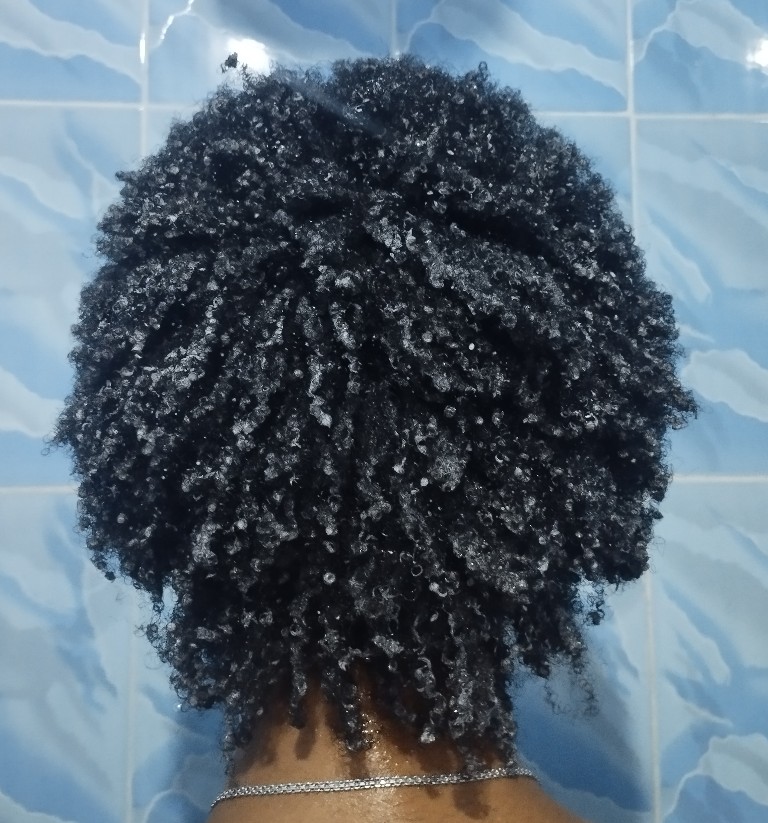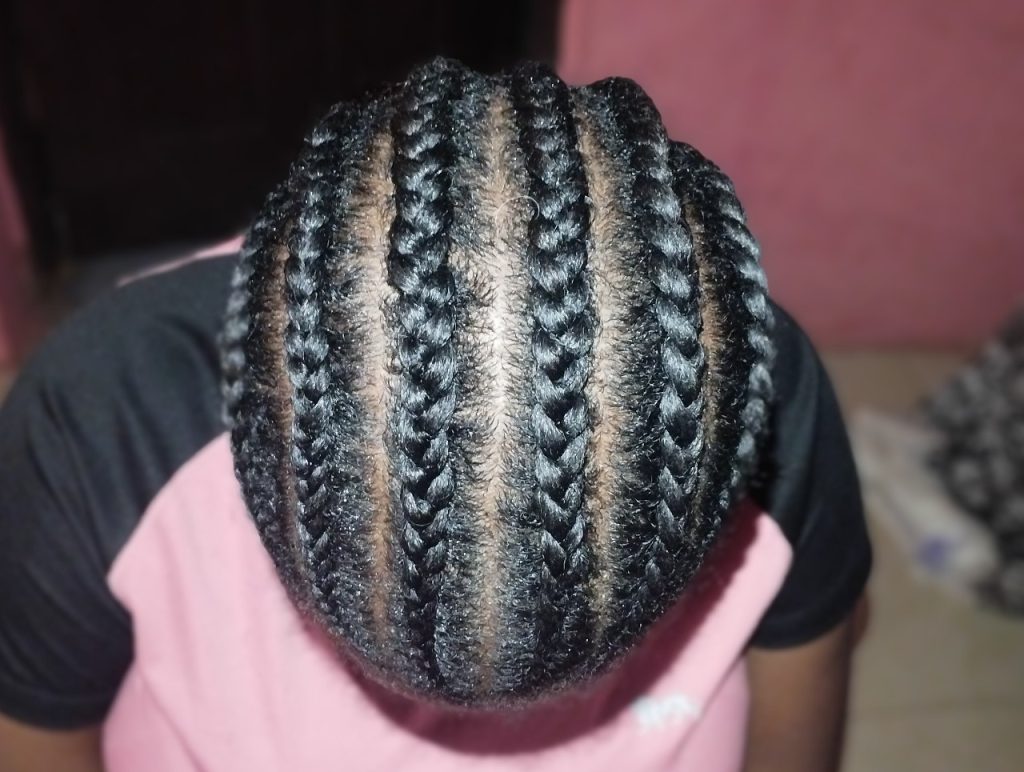Do you want to grow long, healthy natural hair? Then, you need these 21 natural hair tips for beginners, especially if you’re just starting your natural hair journey.
These tips helped me grow more hair length in two years than I did in five previous years. There’s no magic product to show you, just simple hair care tips to make your hair healthy and long! Here you go.
(By the way, I made a free checklist for you. It’s to help you examine and see which natural hair tips you need to improve on to make your hair healthy and long).
- 21 Best Natural Hair Tips for Beginners to Grow Long, Healthy Hair
- 1. Moisturize Regularly
- 2. Use Hair Oils
- 3. Deep Condition
- 4. Detangle Properly
- 5. Trim Your Hair
- 6. Do Protective Hairstyles
- 7. Care for your Hairstyles
- 8. Wash Your Hair Properly
- 9. Keep Your Scalp Healthy
- 10. Use the Right Shampoo
- 11. Avoid Products with Harsh Ingredients
- 12. Try Steaming with Natural Ingredients
- 13. Pre-poo
- 14. Practice Co-washing
- 15. Use Heat Tools Sparingly
- 16. Practice Night Care
- 17. Eat Well
- 18. Drink Water
- 19. Stress Less
- 20. Protect Your Hair from Weather Elements
- 21. Know Your Natural Hair Type
- You can have Long, Healthy Natural Hair

21 Best Natural Hair Tips for Beginners to Grow Long, Healthy Hair
Here are 21 hair tips for every naturalista who wants to grow long, healthy hair:
- Moisturize Regularly
- Use Hair Oils
- Deep Condition
- Detangle Properly
- Trim your Hair
- Do Protective Hairstyles
- Care for Your Hairstyles
- Wash your Hair Properly
- Keep your Scalp Healthy
- Use the Right Shampoo
- Avoid Products with Harsh Ingredients
- Try Steaming with Natural Ingredients
- Pre-poo
- Practice Co-washing
- Use Heat Tools Sparingly
- Practice Night Care
- Eat Well
- Drink Water
- Stress Less
- Protect Your Hair from Weather Elements
- Know Your Natural Hair Type
1. Moisturize Regularly
This tip is number one for a reason — you can’t have healthy, long natural hair without moisturizing.
Our natural hair is prone to dryness, so when you don’t actively moisturize it, it becomes dry and breaks easily. Then, you won’t retain much length, and it will feel like your hair isn’t growing.
So, how do you moisturize your hair to help it grow?
- Apply a leave-in conditioner (preferably a water-based leave-in conditioner) daily
- Always spray your hair with water and/or leave-in conditioner before loosening or detangling your hair
- Deep condition or steam your hair monthly.
2. Use Hair Oils
This is also number two for a reason—natural hair needs oil almost as much as it needs moisture.
Oils seal moisture in the hair, keeping it moisturized for a long time. Hair butters (like shea butter) are even nicer for thick 4c natural hair. Some hair oils like coconut oil and almond oil also have unique properties that help stimulate hair growth.
How do you make the most out of hair oils?
- After applying leave-in conditioner to your hair, apply oil to seal in the moisture
- Apply oil to the ends of your hair too, not only to the roots closer to the scalp
- Thrice a week, apply a few drops of oil to your scalp and massage it in for a few minutes.
Not sure which hair oil to use? Check out these best oils for hair growth.
3. Deep Condition

Aside from regular moisturizing, you also need to deep condition your natural hair. Deep conditioning infuses your hair with moisture, protein and other nutrients.
How often should you deep condition your hair? At least once a month!
Read more about how to deep condition natural hair.
4. Detangle Properly
As a naturalista, you’ll have to deal with detangling often — natural hair tends to tangle easily.
Now, here’s the thing:
Every time you detangle your hair the wrong way, you lose lots of hair strands that you could have saved. If you detangle wrongly every time, it’ll be hard — even impossible — to grow long, healthy natural hair.
Here are tips to detangle natural hair without breaking your hair:
- Always detangle with your fingers first; never dip a comb into your hair straight away!
- Start combing/detangling from the hair ends, then, gradually move to the roots
- Always moisturize your hair (with water and/or leave-in conditioner) before detangling.
5. Trim Your Hair
Trim? Grow long hair? Yes, we’re still on the same topic. As ironic as it may sound, you should trim your hair if you want it to grow long.
Here’s why:
At some point, your hair will have split ends — hair ends that are weak and damaged. When you don’t trim split ends, they split further and then fall off eventually. So, you end up losing more length than you would if you trim them as soon as they appear.
You should check your hair for trims every two to three months.
Read more about trimming natural hair.
6. Do Protective Hairstyles

Protective hairstyles literally protect your hair.
They prevent you from combing your hair every day (which can cause breakage), keep your hair ends tucked away, and reduce the need for heat styling.
For long, healthy natural hair, do these protective hairstyles often:
- Cornrows
- Braids
- Twists
- Bantu knots
7. Care for your Hairstyles
Is it enough to just put your hair in a protective hairstyle and move on? No.
You should keep moisturizing and oiling your hair even while it’s in a protective hairstyle. See how in the video below.
Also;
- Make sure your hairstylist does not make your hair too tight (tight styles are no longer “protective”; they just put unnecessary tension on your hair).
- Don’t over-manipulate your hair, packing it into multiple styles per day.
8. Wash Your Hair Properly
Have you ever heard the idea that dirty hair grows faster? It’s wrong, please! Leaving your hair unwashed for a long time only leaves harmful buildup on your scalp and hair, which can even disturb hair growth.
So, if you want your hair to grow long and healthy, kindly wash it regularly and properly.
Here are a few tips:
- Wash your hair ideally once a week (Some factors may sometimes make this difficult, like having styles with extensions on. In that case, wash your hair as soon as you take down the style. Note that you can even wash your hair with extensions on)
- Don’t dry your hair with a regular towel after washing. Use an old cotton T-shirt or a microfiber towel.
- Use warm water for routine washing.
9. Keep Your Scalp Healthy
Hair grows through pores in the scalp, so you need a healthy scalp to have long, healthy hair.
When your scalp pores are clogged by dirt, oils, and remnants from different hair products, it prevents healthy hair growth. You’ll even struggle with annoying scalp conditions like itchiness and laziness.
How do you keep your scalp healthy?
- When shampooing, focus not only on the hair but also on the scalp
- Use your fingertips and not nails when washing your scalp
- Moisturize your scalp regularly
- Regularly massage hair oil into your scalp (daily, or at least four times a week).
- Use a scalp massager.
Read more about scalp massage for hair growth.
10. Use the Right Shampoo
Washing your hair is a big part of growing long and healthy hair, but not with just any shampoo!
Many shampoos contain sulfates, and you see sulfates; they dry out the hair. Our hair is naturally prone to dryness, so using shampoos that contain sulphates just worsens the situation.
Make sure you use a sulfate-free shampoo. Before buying any shampoo, look for a “sulfate-free” label on the bottle.

To be even more sure, check the list of ingredients and confirm it contains no sulphates. It’s also best to use moisturizing shampoos, especially for 4c natural hair.
11. Avoid Products with Harsh Ingredients
Apart from avoiding sulfates in shampoos, there are other ingredients you should avoid in other hair products. Examples are paraben and silicone in conditioners.
Using products that contain harsh ingredients will damage your hair and prevent it from growing as much as it should.
Read more about harmful ingredients to avoid in hair products.
By the way, some of my favourite hair products that I’ve found safe are:
- Alberto V05 Shampoo and Conditioner
- Mega Growth Daily Leave in Strengthener
- Mega Growth Deep Conditioner
- Natures Gentle Touch Leave In Treatment
12. Try Steaming with Natural Ingredients
Steaming my hair with natural ingredients was my obsession at some point, so I’m definitely counting it in the list of tips that helped my hair grow. A big advantage of using natural products on your hair is that you don’t have to worry about harsh ingredients harming your hair!
Examples of natural ingredients I’ve tried as a Nigerian are:
- Avocado
- Banana
- Aloe vera
- Egg
- Rosemary and cloves oil
- Coconut oil
- Olive oil
- Shea butter
- Honey
- Apple cider vinegar (ACV)
Read more about ingredients for steaming hair in Nigeria.
Vela Tip: Be realistic and don’t expect overnight results or a one-time magical hair sprout — forget the YouTube headlines you see. Like any other product, using natural ingredients requires consistency and patience.
13. Pre-poo
Pre-pooing (short for pre-shampooing) means applying a hair product as a protective layer before shampooing your hair.
For me, that’s usually leave-in conditioner (easy because I use it to detangle my hair before washing) and coconut oil. Pre-pooing prevents shampoo from drying out your hair and moisturizes your hair too.
Vela Tip: Once in a while, apply leave-in conditioner, hair oil, or some of the natural ingredients mentioned earlier to your hair before shampooing!
14. Practice Co-washing
Co-washing means washing your hair with conditioners only, no shampoo. It’s a smart way to keep your natural hair clean while avoiding the drying effects of shampooing.
If you need to wash your hair more than once a week, do co-washing so that you don’t strip your hair of its oil and moisture.
Read more about how to co-wash hair.
15. Use Heat Tools Sparingly
It can be tempting to use flat irons, hair dryers, and other heat tools to style your hair, but overusing them can be dangerous.
For long, healthy natural hair, do not use heat tools more than once in a week.
Is it possible to do without heat tools for natural hair? Sure, I’ve not used a straightener on my natural hair in over two years. Hair dryer – three or four times!
Here are a few tips:
- Instead of using a hair straightener, try African threading
- Instead of using a dryer, air-dry your hair as often as possible
- If you really need to use a dryer, put it on a low-heat (cold air) setting
- Apply a heat protectant to your hair before using any heat tool.
16. Practice Night Care
Breaking news: your hair care efforts do not end during the day. How you leave your hair overnight can have a big impact on your hair’s health.
For example, sleeping on a cotton pillowcase with your bare hair can cause hair breakage. And leaving your hair loose and open overnight can make it tangle unnecessarily.
Here’s what to do to care for your hair at night:
- Twist/braid your hair before going to bed (don’t leave it loose overnight)
- Or use the pineapple trick; tie a headband loosely around your hair to keep it up overnight
- Cover your hair with a satin/silk scarf or bonnet before sleeping
- If you won’t be using a bonnet, sleep on a satin pillowcase
Learn more about protecting your hair overnight.
17. Eat Well
When many people think of long, healthy hair, they think of hair products and lots of routine. But that’s not the only thing.
You need a healthy body to grow healthy hair, so eating well is an important part of hair care. Look for meals that are rich in protein, vitamins, iron, and omega-3 and include them in your regular diet.
Examples of such foods are:
- Eggs
- Avocadoes
- Sweet potatoes
- Beans
Learn more about the right meals for your hair.
18. Drink Water
Drinking water also gives you a healthy body for healthy hair.
Experts recommend drinking two to three litres (six to eight glasses) every day for good health. Make that a routine, and you’ll be taking another step toward long, healthy hair.
19. Stress Less
Stress can affect hair growth. It can also cause obvious effects like growing grey hair.
So, “stress less” may not sound like a natural hair tip, but it is. Live a healthy lifestyle for long, healthy hair.
20. Protect Your Hair from Weather Elements
Another thing that can affect your natural hair growth is the weather. Now, you can’t control the weather, but you can control how it affects your hair.
Here are a few tips:
- Wear more head warmers, bandannas, or scarfs when outside during extreme climates (like heavy rain or harmattan)
- Keep your hair in a protective style during harmattan
- Moisturize your hair even more during harmattan
- Drink more water.
Read more about protecting your hair during harmattan.
21. Know Your Natural Hair Type
Last one — know your hair type. This helps you pick what works best for your hair. For example, you’ll know which type of hair products to choose.
You can have Long, Healthy Natural Hair
And that’s it — 21 natural hair tips to help you grow long, healthy hair! You can use this checklist to see which tips you need to work on and even mark your progress as you go.
If you’re just starting your natural hair journey, you’re quite fortunate to read this now! If you’ve been a naturalista for a while but you want to improve your natural hair, these tips are still your go-to!
They have helped me — are helping me — and I’m sure that with them, you can achieve your long, healthy natural hair!